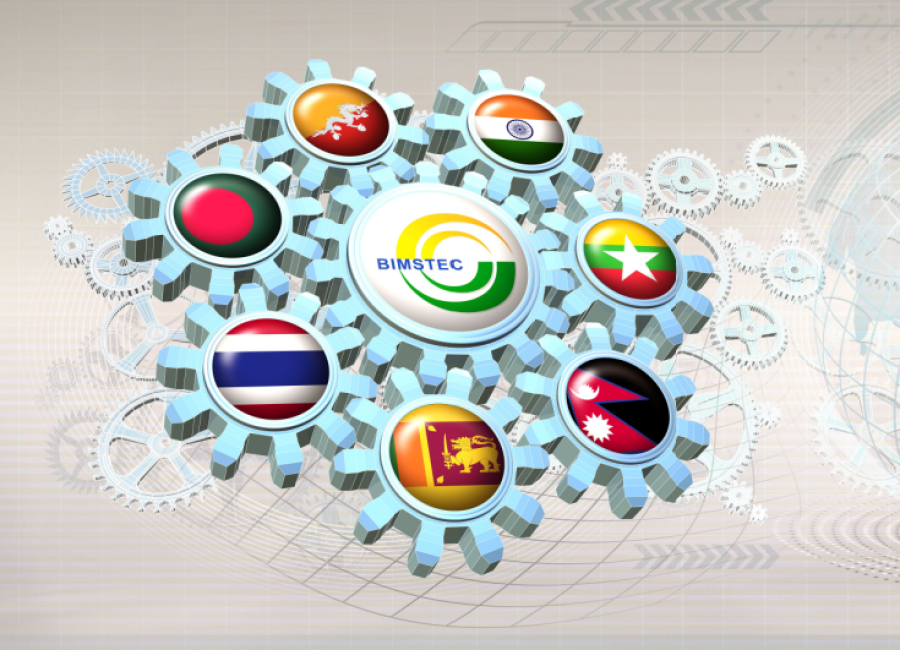Columns
Subregional over regional cooperation
Not waiting for SAARC to regain consciousness, countries are opting for subregional mechanisms.
Smruti S Pattanaik
It is often argued that regional cooperation in South Asia has not succeeded as one sees in other parts of the world. At the same, it needs to be recognised that several challenges exist. The region witnessed a bloody partition in 1947; and in 1971, Bangladesh emerged as a new country. The geographical location of India also makes its role in regional cooperation significant. In the past few years, India has made efforts to restore the connectivity that existed during the British Raj and go beyond that. As the South Asian Association for Regional Cooperation (SAARC) has failed to sign a SAARC Motor Vehicle Agreement (MVA), countries in the region have been trying to forge cooperation through other mechanisms. These cooperation mechanisms are not a replacement for SAARC, but they have acquired their own momentum given the promise they hold.
There is often a comparison between SAARC and the Bay of Bengal Initiative for Multi-Sectoral Technical and Economic Cooperation (BIMSTEC). Many argue that BIMSTEC holds greater promise, but observation shows that each one of them has potential, and their geographical coverage differs. Therefore, instead of waiting for SAARC to revive, countries are making efforts to work within subregional cooperation mechanisms to further their development aspirations. Therefore, each initiative, whether bilateral, subregional or regional, is a building block to take cooperation forward.
BBIN subregional mechanism
It is important to look at some of these mechanisms. The Bangladesh-Bhutan-India-Nepal (BBIN) subregional mechanism is an important mechanism to strengthen cooperation in eastern South Asia. Bangladesh is a growing economy, and India’s northeast, along with Nepal and Bhutan, constitute a cogent region with similarities in culture and food habits. They are geographically closer to each other compared to other parts of South Asia. BBIN has been ratified by all the countries except for Bhutan, but it holds the promise for accelerating growth. The region is close to several ports: Chittagong and Mongla in Bangladesh; Haldia and Damra in India, and Sitwee in Myanmar. There has been an improvement in transport and connectivity between India and Bangladesh, where several road and rail projects have been completed with Indian lines of credit. Nepal and Bhutan have access to the seaports in Bangladesh through India. The Jaynagar-Kurtha rail line and Jaynagar-Bijalpura-Bardibas rail link between India and Nepal are important building blocks in improving subregional connectivity.
Several bottlenecks in this trade need to be resolved. For example, a memorandum of understanding was signed to operationalise the Bangladesh-Bhutan-India-Nepal Motor Vehicles Agreement (BBIN-MVA)in 2015, and a dry run was also made; but not much progress has been made since due to the Covid-19 pandemic. In March 2022, the three countries, pending Bhutan’s ratification, finalised passenger and cargo protocols. Connectivity in the eastern South Asia subregion has improved significantly as India has invested in developing infrastructure for more than a decade. Connectivity has been a keyword to harness the economic potential of the region. Economic development is key to alleviating poverty, generating employment and improving the human index. In the recent past, India has improved the waterways for trade.
There is electricity grid connectivity between the countries of the region. There are cross-border investments also. For example, Bangladesh has invested in Bhutan's 1,125-megawatt Dorjilung project, and power will be evacuated through the existing grid connectivity. Moreover, there is already grid connectivity between India and Bangladesh, and between India and Bhutan. India is contemplating a power grid beyond BBIN and exporting power to Southeast Asia. Given the potential of Nepal, Bhutan and India, there is room to expand the energy projects. While the SAARC energy grid has not taken off despite its potential, a BBIN energy grid has the potential. It will augment the existing infrastructure for subregional power trade. The Indian Energy Exchange is already pioneering cross-border electricity trade. The Solu Corridor 132 kV power transmission line between Nepal and India is another significant development.
Free trade agreement
Similarly, BIMSTEC has a Motor Vehicles Agreement that is a work in progress. Within the BIMSTEC countries, there are discussions on a free trade agreement. There are reports that negotiations for a free trade regime are near completion. There are also discussions on coastal shipping and blue economy that has emerged as a new buzzword for emerging economies. BIMSTEC holds much promise as a regional organisation.
It is equally important to note that several bilateral initiatives also exist between the countries of the region. While India has not waited for the fructification of SAARC as a regional mechanism, it has taken steps to improve both bilateral and multilateral connectivity and forge regional and bilateral free trade agreements. It is important to note that subregional cooperation is a subtext for greater regional cooperation. While SAARC will take time to revive, other subregional initiatives need to be pursued in right earnest. These are important building blocks. Eventually, when SAARC wakes up, it can fall on the subregional building blocks to compensate for the years that have been lost.




 11.12°C Kathmandu
11.12°C Kathmandu













%20(1).jpg&w=300&height=200)

